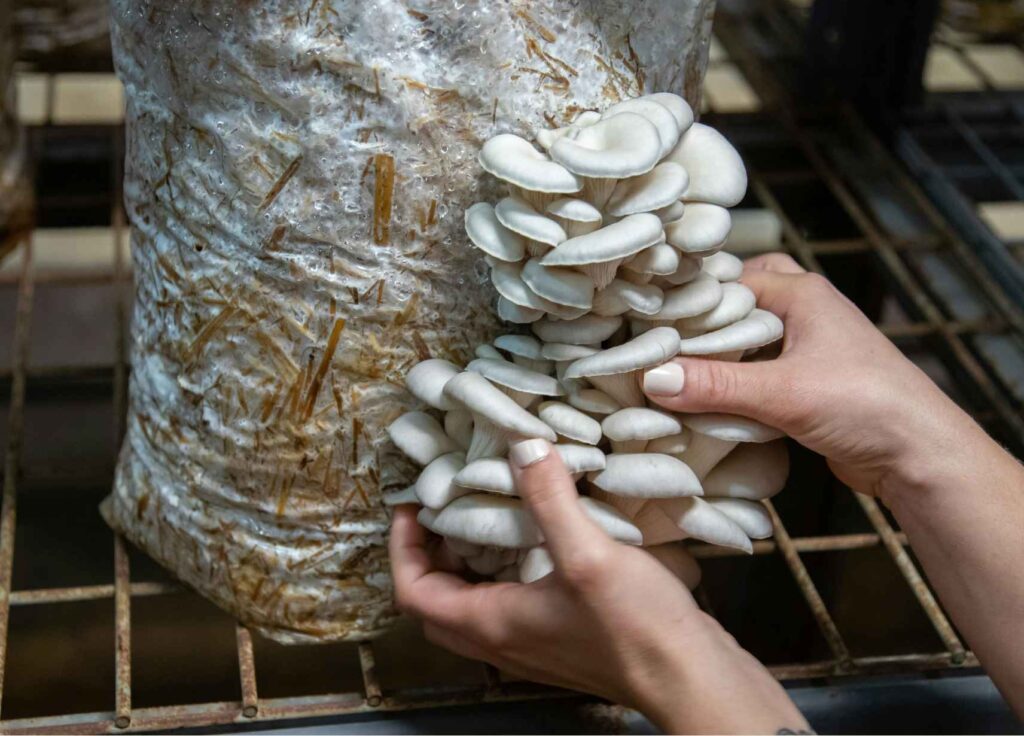

Mushroom cultivation at home is an engaging, rewarding hobby that combines the joys of gardening with the satisfaction of producing your own food. Whether you’re a culinary enthusiast, a health-conscious individual, or simply someone looking to explore a new hobby, mushroom growing offers something for everyone. This comprehensive guide will walk you through the entire process and provide you with the knowledge to successfully grow mushrooms in your own space.
In recent years, the trend of growing mushrooms at home has gained popularity, thanks to its sustainability and the unique flavors it brings to your dining table. Mushrooms are not only a delicious addition to many dishes, but they also boast numerous health benefits. By cultivating mushrooms yourself, you ensure access to fresh, organic produce right at your fingertips.

Embarking on this journey requires an understanding of the basics, from selecting the right types of mushrooms to gathering the necessary tools and materials. This guide is designed to provide you with step-by-step instructions, tips for overcoming common challenges, and resources for further learning. Let’s dive into the fascinating world of mushroom cultivation and discover how you can master this art at home.
Growing mushrooms at home offers numerous benefits beyond the obvious joy of harvesting your own produce. For starters, cultivating mushrooms can contribute to a more sustainable lifestyle. By growing your own mushrooms, you reduce the need for transportation and packaging, thus minimizing your carbon footprint.
In addition to environmental benefits, mushrooms are a powerhouse of nutrition. They are low in calories, high in protein, and packed with essential vitamins and minerals like vitamin D, potassium, and selenium. By incorporating homegrown mushrooms into your diet, you can enjoy these health benefits while savoring the fresh taste that only home cultivation can provide.
Moreover, mushroom growing at home is an educational experience that can be enjoyed by the whole family. It offers an opportunity to learn about the life cycle of fungi, the importance of mycelium, and the various environmental factors that affect growth. This hands-on learning experience can be particularly beneficial for children, fostering curiosity and a deeper appreciation for nature.
Before you begin your mushroom growing journey, it’s essential to understand the different types of mushrooms and their specific growing requirements. Some mushrooms are easier to cultivate than others, making them ideal for beginners. Others may require more advanced techniques and conditions.
Understanding the specific needs of each type will help you create the ideal conditions for their growth. Factors such as light, temperature, humidity, and substrate type play crucial roles in successful cultivation. By tailoring your approach to each mushroom variety, you can maximize your chances of a bountiful harvest.
To get started with mushroom growing at home, you’ll need to gather some essential tools and materials. These items will help you create and maintain the optimal environment for your mushrooms to thrive. Here’s a list of the basic supplies you’ll need:
By equipping yourself with these tools and materials, you’ll be well-prepared to create a conducive environment for your mushrooms. With the right setup, you can minimize challenges and maximize your success in growing a bountiful harvest.
For beginners, using an at-home mushroom growing kit is an excellent way to start. These kits are designed to simplify the process and increase your chances of success. Here’s a step-by-step guide to get you started:
By following these steps, you’ll have a solid foundation for growing mushrooms at home. Kits provide a structured approach, making it accessible for beginners while offering a rewarding experience.
If you’re interested in a more hands-on approach, growing oyster mushroom mycelium at home can be a cheap and easy experiment. This process allows you to cultivate mushrooms from scratch, providing a deeper understanding of mushroom growth.
This experiment is not only educational but also rewarding, as you’ll witness the entire life cycle from mycelium to mature mushrooms. It’s an excellent way to build confidence in your growing abilities and enjoy the fruits of your labor.
Achieving success in mushroom cultivation requires attention to detail and an understanding of the factors that influence growth. Here are some valuable tips to enhance your mushroom growing experience:
By incorporating these tips into your cultivation routine, you’ll be better equipped to tackle challenges and achieve a successful harvest. Each growing cycle offers learning opportunities that will enhance your skills over time.

Like any gardening endeavor, mushroom growing at home comes with its own set of challenges. Understanding these common issues and how to address them will improve your chances of success:
By recognizing these challenges early and implementing effective solutions, you’ll minimize setbacks and increase the likelihood of a bountiful harvest. Learning from these experiences will also make you a more proficient mushroom grower over time.
Once your mushrooms have matured, it’s time to harvest and store them properly to enjoy their full flavor and nutritional benefits. Here’s a guide to harvesting and preserving your homegrown mushrooms:
Proper harvesting and storage techniques ensure you enjoy the fruits of your labor for as long as possible. Freshly picked, homegrown mushrooms are a testament to your hard work and dedication.
As you continue your mushroom growing journey, you may want to deepen your knowledge and explore more advanced techniques. Numerous courses and resources are available to help you expand your skills:
By utilizing these resources, you’ll gain a deeper understanding of the art and science of mushroom growing. Continuous learning will not only enhance your skills but also keep you inspired and engaged in this rewarding hobby.
Mastering the art of mushroom growing at home is a fulfilling journey that offers both culinary delights and educational experiences. By understanding the different types of mushrooms, their growing requirements, and the necessary tools and materials, you are well on your way to becoming a proficient mushroom cultivator.
From starting with beginner-friendly kits to experimenting with growing oyster mushroom mycelium at home, this guide has equipped you with the knowledge and confidence to embark on your mushroom growing adventure. Remember to maintain optimal conditions, address challenges promptly, and harvest your mushrooms at the right time to enjoy their full benefits.
As you develop your skills, consider exploring further learning opportunities through courses, books, and community resources. And if you’re ready to take your mushroom growing to the next level, try magic all in one grow bags for an all-in-one solution that simplifies the process and enhances your growing success.
Happy mushroom growing, and may your harvests be plentiful and rewarding!